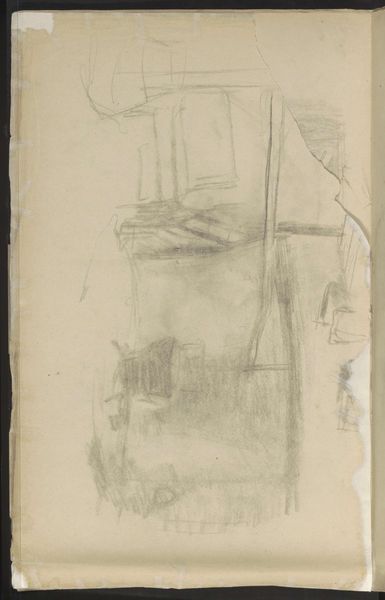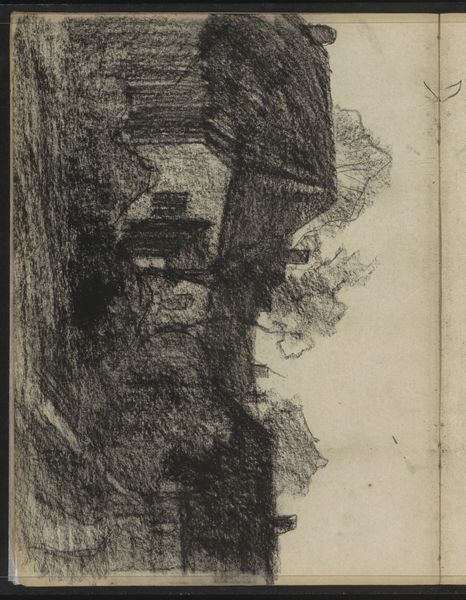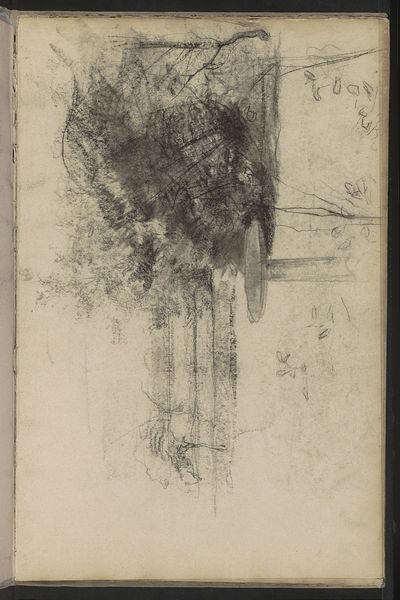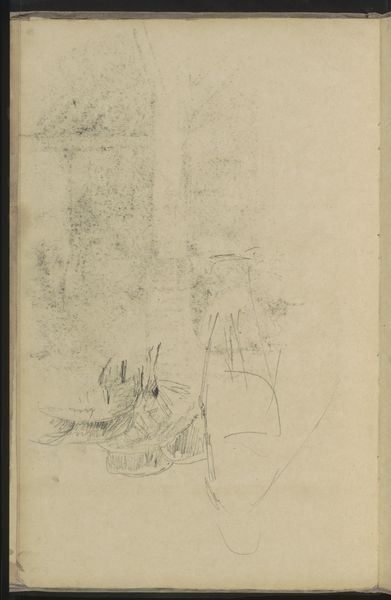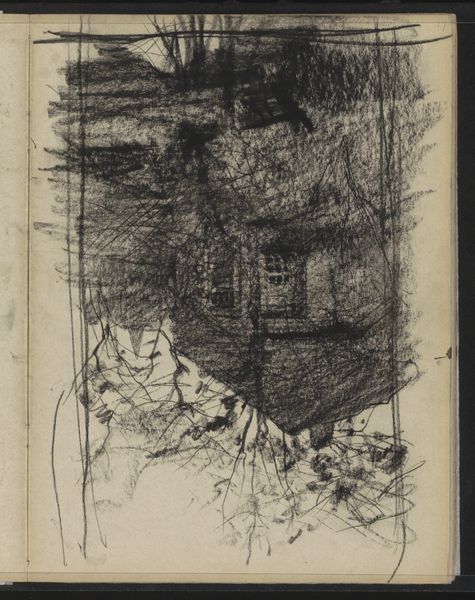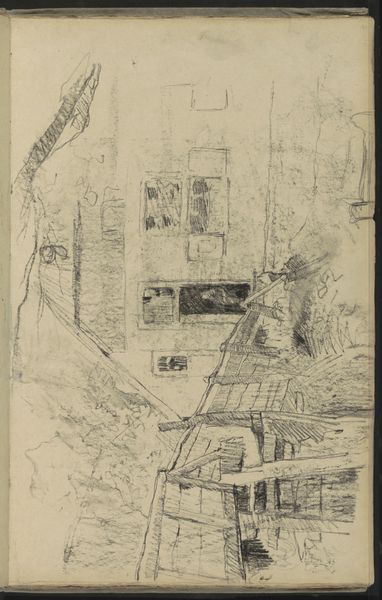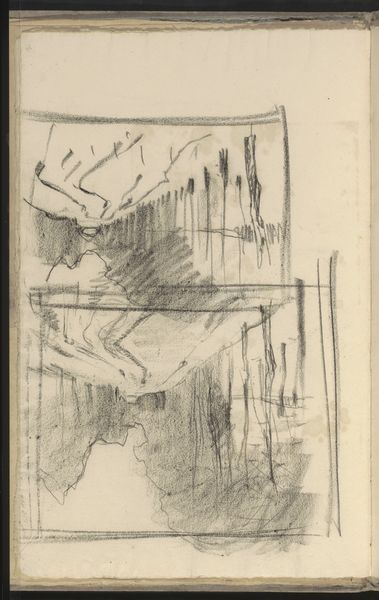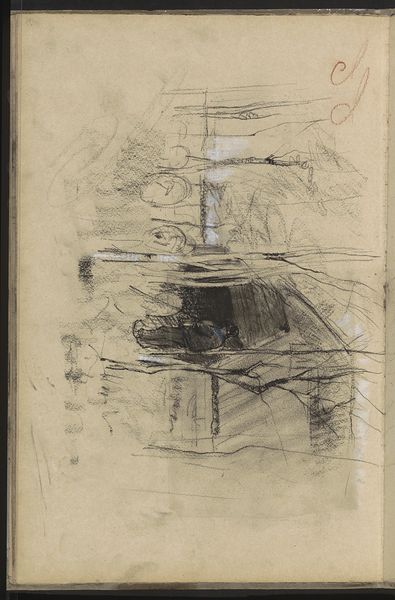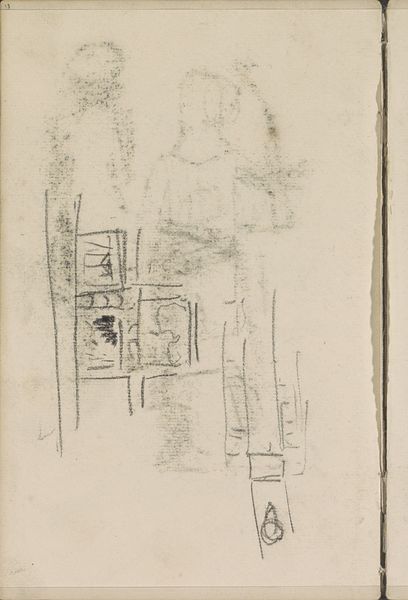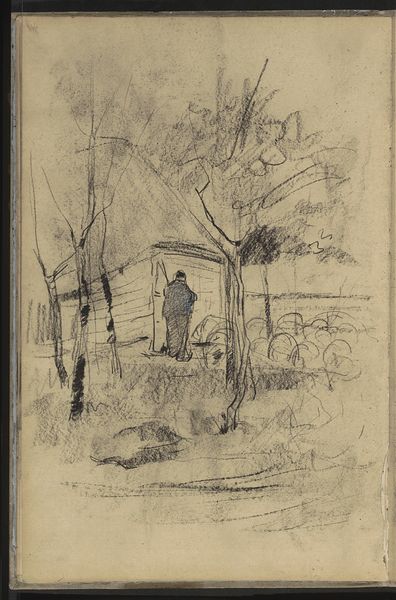
drawing, graphite
#
drawing
#
dutch-golden-age
#
landscape
#
graphite
#
watercolor
#
realism
Copyright: Rijks Museum: Open Domain
Editor: So, this drawing is "Interior of a Sheepfold," made with graphite around 1884-1887 by Willem Witsen. It’s currently at the Rijksmuseum. It feels almost claustrophobic, despite being a landscape, because the details are so heavy and smudged. What strikes you about it? Curator: I'm drawn to how Witsen uses graphite not to illustrate an idyllic pastoral scene, but to convey the materiality of the sheepfold itself. Note the visible marks of the graphite, the varying pressure. It speaks to the labor inherent in managing such a space, the constant maintenance, the very real work of animal husbandry that is often romanticized. It makes me consider what social relations might be embedded into it as well as, potentially, a sense of social injustice related to industrialization’s displacement of agrarian models. What do you think about the contrast between subject matter and method? Editor: I hadn't thought about the contrast like that. I was initially focused on how the shading creates a sense of enclosure. But now I see how the visible strokes highlight the artist’s labor. Did the materials available at the time limit the range of subjects in such sketches, or enhance the artists approach to depicting scenes from the countryside? Curator: Interesting question. Available materials certainly play a part, especially when considering access. Graphite was readily available. Yet that availability connects directly to its utility – sketching was preparatory, it wasn’t deemed “high art.” Think about it, though. Sheepfolds are also built and sustained with very accessible, if unprocessed, materials. Are we looking at the “sketch” in the material of building construction when viewing the artwork? Is this the intersection of available art labor intersecting directly with available construction resources in the countryside? Editor: That’s fascinating. I had seen this drawing as a simple scene, but your perspective really opens up so many layers of interpretation about labour and context! Curator: And hopefully my viewpoint also suggests the wealth of information one can extract when questioning “artistic” labor in connection to subject choices and historical materiality!
Comments
No comments
Be the first to comment and join the conversation on the ultimate creative platform.
